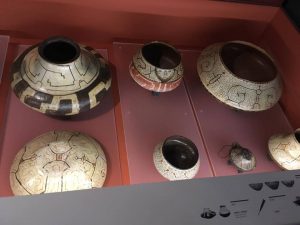In ‘Rhetoric and Self-Representation in Disability Memoir’ (2009), G.T Couser explains autobiographies may be the most accessible literary genre to members of marginalized groups, particularly the disabled (1). Couser’s reasoning behind this involves the notion that autobiographies give disabled people a high degree of control over their own images (1). Couser elaborates how important this degree of self-representation is because it holds great potential for individuals to address “stigmatizing or patronizing portrayals of disability” (1).
‘Cockeyed’ (2006) an autobiography by Ryan Knighton can be one example of the potential Couser emphasizes. In his novel, Knighton details how on his eighteenth birthday, he was diagnosed with a congenital and progressive eye disease which would eventually lead to blindness. Knighton talks of the struggles he has faced as a result of his new disability, one of the most difficult being transitioning from an able-bodied person to a disabled one. Readers of ‘Cockeyed’ can see this in Knighton’s initial denial in being disabled; up until his eighteenth birthday, Knighton has experienced several near life-threatening incidents such as driving his car up a line of large decorative boulders, which unbeknownst to him, were due to his eye disease. Knighton acknowledges how dangerous the car incident in particular was, “I drove for thirteen danger-filled months, practically blind and legally reckless, unaware of what I was missing” (24). Yet when Knighton realized his diagnosis provided a concise explanation for those incidents, he continuously dismissed it as “some rumored future of blindness” (45). His denial may be partly because his idea of being blind did not sync with what he experienced, “I found night blindness difficult to identify or accept because I could see light” (49).
In spite of this denial, Knighton became increasingly aware his location within society has gradually shifted to outside of it. He explained how he found solace in night clubs because, “The culture camouflaged my inability to cooperate with other bodies” (55). Here, we can sense Knighton’s longing to be like everyone else who was able-bodied. Even when Knighton finally takes up a white cane, he sees it as “a form of concession and defeat” because it is a “permanent commitment to blindness” (61). Though Knighton has accepted his blindness, we can see his reluctance in his repeated attempts to hide the cane and his insistence that his “mobility aid” was like his blindness, “both were occasional” (69). Though Knighton knew he needed his stick to guide him, he only felt comfortable with it when no one else was around; for weeks, when he carried it, he feared “everybody in the world caught a glimpse of me … playing Blind Man for the crowd”, and he would “casually swing it around” to reassure his audience he did not truly need it (70).
It is possible Knighton’s reluctance can be traced less to personally accepting he is blind, and more to accepting it in the face of society regardless of the reactions he may receive to his disability. For myself, this is a topic of great significance because we may live in a society where unless it is explicitly stated, an individual is usually assumed to be able-bodied. However, this explicit statement tends to be treated like a label, and once someone assumes that label, it tends to dominate their entire identity instead of becoming another dimension of it. Thus, the general public is likely to only see them as this label, along with the “stigmatizing or patronizing portrayals” which come attached (Couser 1). As the labelled individual may be hyper aware of how they are viewed, it can influence them into feeling uncomfortable with this newfound aspect of their identity, resulting in attempts to reject it despite the possible harmful ramifications. As ‘Cockeyed’ talks in depth about these issues on a published platform where it can reach others, it helps contribute in deconstructing negative portrayals of the disabled.
Works Cited:
Couser, G. T. Signifying Bodies: Disability in Contemporary Life Writing. University of Michigan Press, 2010. Accessed 10 March, 2018.
Knighton, Ryan. Cockeyed: a memoir. Thorpe, 2008. Accessed 10 March, 2018.

